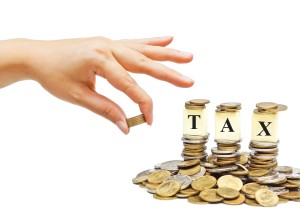Government’s Proposed Cuts to the R&D Tax Incentive Lapses
April 21st, 2016 Innovation has become progressively debated in public discourse of late, leading to a significant focus on the R&D Tax Incentive in the last 12 months. This week, however, a positive development was made that will no doubt be welcomed by the innovation ecosystem in Australia.
Innovation has become progressively debated in public discourse of late, leading to a significant focus on the R&D Tax Incentive in the last 12 months. This week, however, a positive development was made that will no doubt be welcomed by the innovation ecosystem in Australia.
To clarify, a proposed 1.5% cut to the R&D Tax Incentive under the Tax and Superannuation Laws Amendment (2015 Measures No. 3) Bill 2015 will not ensue – the Bill before the senate has lapsed and will not be proceeding. The proposed figures, had the Bill passed, would have seen the R&D tax incentive percentage reduce from 40% to 38.5% for large companies and from 45% to 43.5% for smaller companies with turnover under $20 million.
The Bill, first introduced in May 2015, has created substantial business uncertainty around the program as the cuts were to be retrospective from 1 July 2014. Thus, the lapsed amendments help provide a more definite, steady and dependable policy context for innovation and R&D to flourish.
Nonetheless, whilst the R&D Tax Incentive remains the same today, a review of the scheme is currently underway and it is expected to report to Government by the end of April 2016. Hence, the lapsed Bill is, with hope, an indication of an ongoing commitment to R&D across all political parties as any alterations could considerably change investment behaviour in Australia. To elaborate, David Lamont, Chief financial officer of CSL, has cautioned that fluctuations to the tax incentive could weaken government efforts to grow the social and economic benefits flowing to Australians from science and innovation. Fundamentally, this attitude mirrors Swanson Reed’s view that a long term commitment to the programme’s stability is the single best way to enhance its effectiveness. As described in our previous blog post, any adverse changes may harm Australia’s reputation as a destination for investment in R&D. Many overseas entities have invested in Australia based on expected future entitlements available under the R&D Tax Incentive.
Indeed, alterations to the R&D tax initiative could produce a barrier to innovation in Australia and the stability of the R&D tax incentive scheme over time plays an important role on R&D expenditure. In 2015, 28 out of 32 OECD countries were using R&D tax incentives to support business R&D. Thus, Australia needs to maintain the R&D Tax Incentive and resist further changes to the program to remain a globally competitive and attractive location for R&D. In fact, the refundable (‘cash out’) component of Australia’s R&D incentive is the most generous when compared to other OECD countries around the world. Overall, in its current form, the R&D Tax incentive is an easily accessed and significant program and the structure of the program should not be altered too drastically. As noted above, hopefully the lapsing of the Bill and the continuation of the scheme’s framework is a sentiment that will also be reflected in the findings of the recent review.
If you have any further questions, please contact one our R&D tax specialists .
Categories
- ATO Guidance and Materials
- AusIndustry Guidance and Materials
- Case Law
- Federal Budget 2021
- Federal Budget 2022
- For Accountants
- General Information
- Government Policy and Treasury
- Industry Specific Issues
- Interpretative Decisions
- Legislation and Parliamentary Matters
- R&D Tax Credit
- R&D Tax Funding Strategies
- R&D Tax Loans
- Recent News
- Tax Determinations
Archives
- April 2024
- March 2024
- February 2024
- January 2024
- December 2023
- November 2023
- October 2023
- September 2023
- August 2023
- July 2023
- June 2023
- May 2023
- April 2023
- March 2023
- February 2023
- January 2023
- December 2022
- November 2022
- October 2022
- September 2022
- August 2022
- July 2022
- June 2022
- May 2022
- April 2022
- March 2022
- February 2022
- January 2022
- December 2021
- November 2021
- October 2021
- September 2021
- August 2021
- July 2021
- June 2021
- May 2021
- April 2021
- March 2021
- February 2021
- January 2021
- December 2020
- November 2020
- October 2020
- September 2020
- August 2020
- July 2020
- June 2020
- May 2020
- April 2020
- March 2020
- February 2020
- January 2020
- December 2019
- November 2019
- October 2019
- September 2019
- August 2019
- July 2019
- June 2019
- May 2019
- April 2019
- March 2019
- February 2019
- January 2019
- December 2018
- November 2018
- September 2018
- July 2018
- June 2018
- May 2018
- April 2018
- March 2018
- February 2018
- January 2018
- December 2017
- November 2017
- September 2017
- August 2017
- July 2017
- June 2017
- May 2017
- April 2017
- March 2017
- February 2017
- January 2017
- December 2016
- November 2016
- October 2016
- September 2016
- August 2016
- July 2016
- June 2016
- May 2016
- April 2016
- March 2016
- February 2016
- January 2016
- December 2015
- November 2015
- October 2015
- September 2015
- August 2015
- July 2015
- June 2015
- May 2015
- April 2015
- March 2015
- February 2015
- January 2015
- November 2014
- October 2014
- September 2014
- August 2014
- July 2014
- June 2014
- May 2014
- April 2014
- March 2014
- February 2014
- January 2014
- December 2013
- November 2013
- October 2013
- September 2013
- May 2013
- April 2013
- March 2013
- September 2012
- August 2012
- June 2012


 Free Call: 1300 009 390
Free Call: 1300 009 390





 News & Research
News & Research



